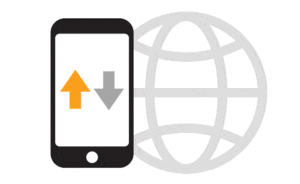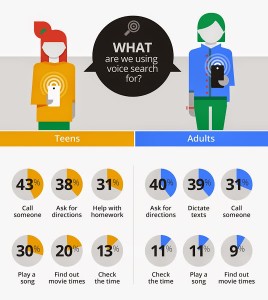Almost 90 percent of all product assessments are related to color, indicates a study conducted by Quick Sprout. Each color has a psychological effect on us that goes deeper than we think. They have an enormous influence on our attitudes and emotions. For example, the color blue has a calming effect while yellow signifies joy and happiness and black represents elegance, formality and a sense of exclusivity. It is, therefore, imperative to use the right colors to make your product successful and this is also applicable to web designing, UX and conversion rate.
“Color is 85% of the reason you purchased a specific product.” – Neil Patel
Colors and Perception of a Specific Brand
Color is probably the most powerful and most tricky thing for a designer to handle.
We are aware of the fact that colors impact users’ emotions and leveraging this psychology, designers draw their attention in order to influence them to make a purchase. This is how color plays a major role in developing customers’ perception
of a specific brand.
When it comes to color combinations, the possibilities are infinite, making it even harder for designers to decide the right color that will make the best impact on your website/app. It is almost impossible to test all color combinations and that’s why it is important to understand the impact of the color you have picked up on the attitudes and behavior of your users.

If you are already familiar with the color wheel and basic color theory, you already know that there are 3 basic/primary colors i.e. red/magenta, blue/cyan and yellow which are mixed to create secondary colors viz. green, orange and purple. While, on the other hand, is added to a color (primary and secondary) to create tints and black to create shades as the darkness/lightness of a color defines its value.
How to Improve Conversion Rate Using Colors
In order to use color to increase your conversion, the first step is to get familiar with the color wheel and the psychological effect of each color. Next comes learning how to use the color in the right way, for the right purpose, at the right time and with the right audience. This is the core principle of color psychology.
This is rather tricky to comprehend. For example, if you are selling kids’ toys, what color would you choose for your website? Definitely not black or gray as they are too dark and dull to attract a youngster. Instead, you will use some bright and vibrant colors like reds, greens, yellows and/or a splash of pink and blue.
Here’s how to use color in the right ways to improve your conversion rate.
Effect of Color: Men vs. Women
University of Maryland’s sociologist Philip Cohen conducted a study on gender norms, which indicates that 35 percent of women prefer blue, 23 percent favor purple and 14 percent like green. In addition, 33 percent of women interviewed confirmed that they detest orange, followed by brown and gray. The study also indicated that “blue”
is a favorite color for both men and women.
Colors for Women
Women, in general, dislike earthy tones and prefer primary colors with tints. This is why all e-Commerce sites targeting female audiences use colors preferred by women. For example, L’Oreal’s website uses black and white primarily with a purple overlay. ASOS, the fashion brand, trusts white, black and blue to make the website more appealing to the customers. In other e-Commerce sites that primarily cater to women customers such as Milani Cosmetics and Tamara Mellon you will find no trace of orange, brown or gray on the homepage.
There is a misconception that “pink” is a universally favorite color for females. But this is far from the truth. Although this color suggests femininity, it is not really appealing to most women. So if you are creating a website with women audiences in mind, make sure your web design company is using colors like blue, purple, and green to improve your site’s appeal to your female visitors, which in turn, is likely to improve conversion rate.


Colors for Men
When it comes to men’s color preferences, they hate purple, orange, and brown. Instead, blue, green, and black are termed as men’s favorite colors as they are associated with manliness. In fact, “blue” creates a sense for security and trust for both men and women. It is therefore quite understandable that men’s designer brand Ralph Lauren uses blue in their website to which men respond positively.
The same goes for black that fosters a feeling of elegance, exclusivity and luxury. That’s why this is one of the most trusted colors for designers for creating all kind of classy websites including high-end fashion sites and luxurious brands. A private jet brokerage site JamesEdition.com, for instance, use black for its background color.

Contrast is Crucial
Complementary colors are directly opposite each other on the wheel and they contrast strongly. Use them to attract your viewers’ attention and as well as to build energy.
In fact, you can easily use contrasting primary and secondary colors for call-to-action buttons. But using contrasting color alone is not enough, that color must stand out, imply a sense of urgency and spur your visitors into action. For instance, the landing page conversion rate of Performable increased by 21 percent after changing their CTA button from green to red.

If you want to create a sense of continuity and harmony in the design, opt for lower contrast colors like analogous colors like blue and green which are next to each other on the color wheel. This is ideal for meditation sites/apps or for something that needs to calm your viewers’ mind, making them feel relaxed and peaceful. But when using colors in text, use high value contrasting colors next to each (such as black on white) otherwise it will be very difficult to read your copy, especially on mobile screens.
The Contrast, therefore, is about color value as well. A light CTA button will stand out against a dark background, an apt example being those of Ghost buttons, which are much in trend nowadays. So if you are using a lot of red in your website, having a button in red too won’t yield any result even though red beats green in terms of button color A/B test. The copy too needs to stand out against your button.
Some handy tips to choose colors for various website components
Now that you have a better perspective about the psychology of colors, take a look at some handy tips, which will help you take an informed decision when you want to choose colors for various website components.
- Highlight smaller CTA buttons with brighter colors. It should contrast with the background color so that it is easily noticeable by the visitors.
- As a rule of the thumb, choose different colors for links that have been clicked, links that have not been clicked and the text.
- Always make sure that the color of text or any typography on the web page is in contrast with the background.
- Don’t make the background too light. To be on the safer side of things, stick to pastel shades or muted colors.
- Never use a color that “hurts” the eye. This goes for almost all the elements, including sidebars and the headers.
Conclusion
By using the right color in the right way, you can not only improve your conversion rate but also accomplish a lot, including your brand recognition. Therefore, do not settle for a color just because it “looks good.” Think about its impact on your target audience and their preference. Will that help you to stand out in the crowd? If not, you need to rethink your color strategy. Although color aesthetics is important, it is not everything. You should, therefore, try and test several colors, especially for your conversion text or CTA button. But remember that using too many colors can confuse your viewers and make your website/app difficult to read. The solution is to keep it simple, bright and clean something that will enhance your users’ experience.
Do you notice any impact of colors on your conversion rate?
(599)
Report Post












